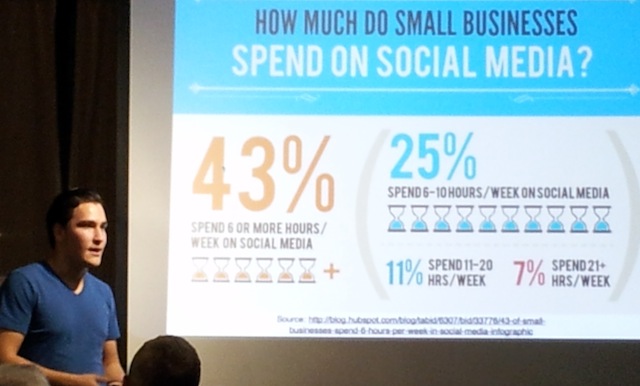Let’s talk about money, but not in the boring spreadsheet way. This is about you, your habits, and why that midnight snack order or random online shopping spree might be sabotaging your future. Here’s a fact that should wake you up more than espresso: In 2023, over 57% of Indians earning ₹1 lakh or more every month still lived paycheck to paycheck. So if you think a higher salary alone will save you, think again.
Invisible Habits Can Drain Your Wallet
Ever reached for your phone and opened a shopping app without even thinking? That’s habit, not choice. Buying a daily ₹150 coffee might not seem wild, but that totals ₹4,500 per month. That’s ₹54,000 a year—enough to fund a vacation to Bali or invest in a solid SIP.
Scientists say around 45% of what we do every day is driven by habit, not conscious thought. So when your wallet cries every end-of-month, it’s probably not just because of your job’s pay scale—it’s about your routines.
Follow the Money Trail
One of the easiest ways to figure out your financial patterns is to track every rupee for 30 days. Don’t overthink it. Use a pen and notebook, Google Sheets, or a budgeting tool like Azione Kivo App.
Take Aanya, a software engineer from Bengaluru. She thought she spent wisely until she logged expenses and discovered she was blowing ₹8,200 a month on food delivery alone. A 2022 study showed 68% of users underestimated their non-essential spending by more than 30%. Surprise!
Emotions Swipe Your Card More Than You Do
That “I’m so tired, I deserve this” thought? It’s costing you. Emotional spending is a real thing. After the 2020 lockdowns lifted, retail therapy spending jumped 26% across India.
Meet Rahul. He shops online whenever he’s had a bad day. Turns out he was spending over ₹12,000 monthly on impulse buys. The fix? He started journaling. Tracking his emotions stopped the reflexive spending cycle cold.
The “I Deserve It” Spiral
Everyone loves treating themselves, especially after a promotion. But when your lifestyle upgrades faster than your income, trouble starts. In 2022, 44% of Indians actually saved less after their salary increased.
Buying a new phone just because your friend upgraded isn’t self-care. It’s self-sabotage. Want to reward yourself? Try investing that extra cash and watching it grow. That’s long-term flex.
Know Your Money Personality
Are you a spender, saver, or financial ghost? Understanding your money personality is like getting a cheat code. Take Mira, a school teacher from Indore. She avoided banks, budgets, and anything remotely financial. After taking a simple money quiz, she realized she was a “money hoarder”—afraid to invest, too obsessed with hoarding cash. Knowledge helped her adjust.
Knowing your financial style helps you find strategies that stick. Without it, you’re just trying random hacks with zero results.
Childhood Set the Stage
Ever heard your parents say, “Money doesn’t grow on trees”? That mindset probably shaped your spending style. Culture and upbringing heavily influence how we view cash.
A 2023 survey revealed that 71% of Indian adults never received formal financial education. It’s no wonder two siblings raised in the same household can end up financially worlds apart. Recognizing these early influences helps you break unhelpful patterns.
Tiny Choices Add Up Big
Skipping one Uber and taking the metro may seem minor, but multiply that. Replacing four rides weekly with public transport saves ₹2,000 a month. That’s ₹24,000 in a year. Toss in homemade lunch twice a week? Add another ₹6,000 saved.
Even saving ₹500 weekly adds up to ₹26,000 annually. Toss that into a mutual fund and in 10 years, you’ve got serious change.
Triggers and Defaults: Your Secret Weapons
Want better money habits? Set smart defaults. Automate transfers to a savings account the day your salary drops. Hide your credit cards or uninstall shopping apps temporarily.
Behavioral finance studies show that automation increases long-term savings by 47%. Azione Kivo App can make this even easier by letting you set recurring payments and visualize goals. The less you have to think, the more consistent you become.
Make It a Game
Saving money doesn’t have to be boring. Gamify your goals. Celebrate every ₹10K milestone. Use sticker charts or colorful trackers. Gen Z especially responds to visual progress.
Take Dev, a college student in Chennai. He used a paper tracker and emoji stickers to build an ₹85,000 emergency fund in nine months. He said watching the chart fill up was better than scrolling Instagram.
Another smart move? Try platforms like https://azione-kivo.it/ to visualize your progress in real time. These tools turn boring budgets into vibrant dashboards, with bars and graphs that actually make saving fun.
Some users said they opened Azione Kivo more often than Instagram. One woman even shared that watching her SIP grow by ₹2,400 in a week gave her more satisfaction than binge-watching a new Netflix series. Financial growth as entertainment? We’ll take it.
Reflect, Adjust, Repeat
Habits need tweaking. What worked in January may flop in June. Monthly check-ins are key. Ask: What worked? What drained my wallet? What can I do better?
Try journaling, voice memos, or even video logs. No method is silly if it helps. Remember, budgeting isn’t punishment. It’s permission to spend on what truly matters.
Your Brain Is Your Best Investment
Once you understand why you do what you do with money, you gain power. Control. Freedom. You start spending less reactively and more intentionally.
A bank balance is just a number. But your habits? That’s your real wealth blueprint. As one financial coach once said, “You don’t need to earn more. You need to learn yourself more.”
So go on, decode your money brain. Your future self will thank you—probably from a beach in Goa, sipping coconut water, stress-free and debt-free.


